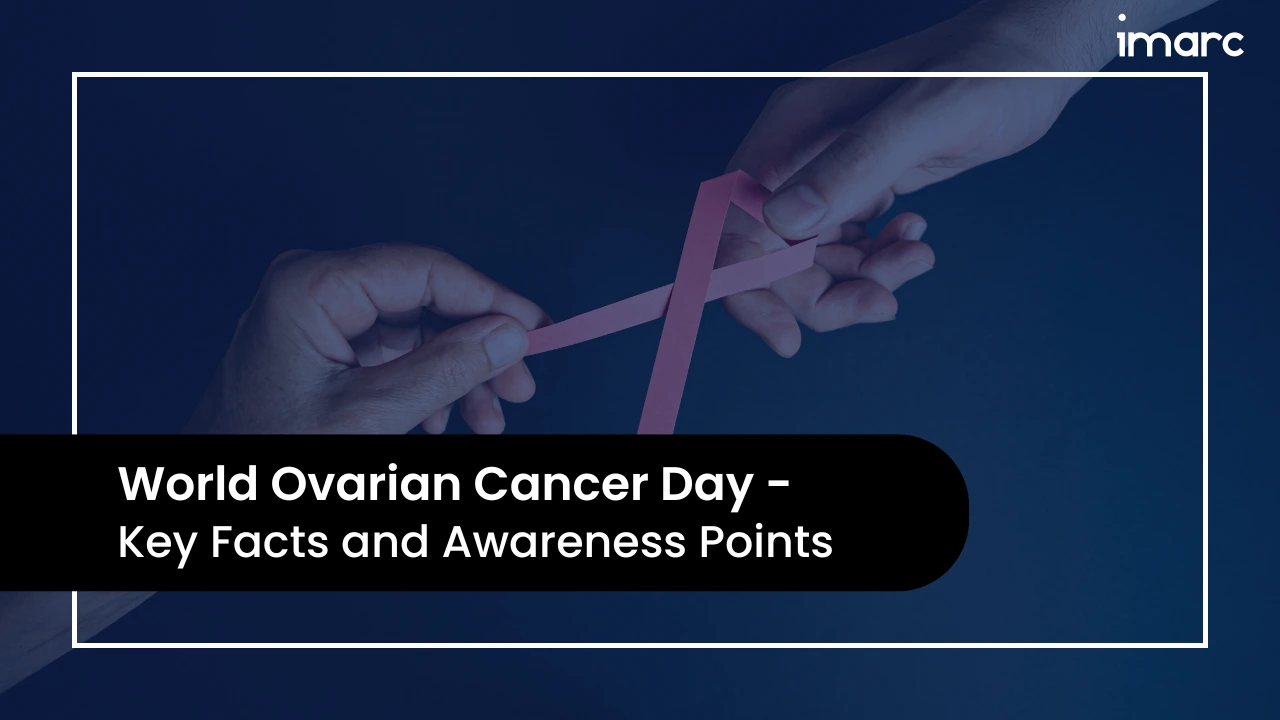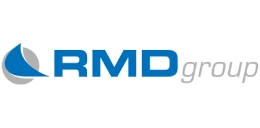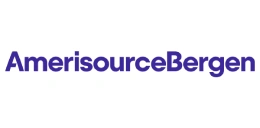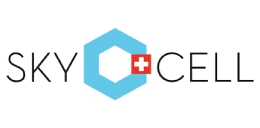World Ovarian Cancer Day - Key Facts and Awareness Points

Observed on May 8, World Ovarian Cancer Day 2025 carries the theme “No Woman Left Behind,” reinforcing the urgent need to close the gaps in access, diagnosis, treatment, and care across all regions and socioeconomic groups. Ovarian cancer remains one of the deadliest gynecological cancers, often detected too late due to vague symptoms and limited screening tools. The World Ovarian Cancer Coalition projects a 55% rise in annual cases and nearly 70% more deaths by 2050, with the heaviest burden falling on low- and middle-income countries. Equitable access to early diagnostics, genetic testing, and targeted therapies is critical. As per IMARC projections, the global ovarian cancer market size reached USD 2.3 Billion in 2024 and is expected to grow to USD 5.5 Billion by 2033, with a CAGR of 9.59% from 2025-2033. From AI-enhanced blood tests to cutting-edge antibody-drug conjugates, innovation is expanding hope.
A Silent Surge: Global Incidence on the Rise
Ovarian cancer, often referred to as the "silent killer," continues to pose a significant health challenge worldwide. The World Cancer Research Fund reports that it is the 18th most frequently diagnosed cancer worldwide and the 8th most prevalent cancer among women. In 2022, an estimated 324,603 women worldwide were diagnosed with ovarian cancer. If current trends continue unchecked, this number will rise to nearly 500,000 annually by 2050, a 55% increase. The most significant rise in absolute numbers will occur in Asia, while Africa is projected to see the highest percentage jump, more than doubling its current incidence. Deaths from the disease are also set to soar from 206,956 to over 350,000 annually by 2050, with Africa and Asia bearing the heaviest burden.
Sharper Tools: Diagnostic Breakthroughs
Advancements in diagnostic technologies are enhancing the early detection of ovarian cancer:
- The Raman detection method focuses on identifying haptoglobin, a biomarker associated with epithelial ovarian cancer. This technique has demonstrated a diagnostic sensitivity of 100% and specificity of 85%, indicating its potential as a reliable diagnostic tool.
- Introduced at the ESGO 2025 Annual Meeting, the "Vienna Index" and "Top Vienna Index" are advanced diagnostic tools that incorporate age into existing biomarker combinations. These indices aim to improve the differentiation of adnexal masses, thereby enhancing the accuracy of ovarian cancer detection.
- A clinical trial led by the University of Queensland is evaluating a blood test that detects early-stage ovarian cancer by targeting extracellular vesicles (EVs). Preliminary studies have shown this test to have an overall accuracy of 94% and a low false positive rate of 4%, making it a promising tool for early detection.
Targeted Strikes: Therapies in the Pipeline
The therapeutic landscape for ovarian cancer is evolving with promising developments:
- ELAHERE (mirvetuximab soravtansine-gynx) is an antibody-drug conjugate designed to treat platinum-resistant ovarian cancer that expresses folate receptor alpha (FRα). In the final results from the Phase 3 MIRASOL trial, which had a median follow-up period of 30.5 months, the drug showed a 32% lower risk of death compared to standard chemotherapy. Patients receiving ELAHERE also experienced a greater objective response rate and longer median overall survival.
- Cartherics is set to begin clinical trials in 2025 for CTH-401, an investigational allogeneic (off-the-shelf) CAR-NK cell therapy specifically developed to target ovarian cancer. Derived from a clonal induced pluripotent stem cell (iPSC) master bank, CTH-401 is genetically engineered with a second-generation CAR construct aimed at tumor-associated glycoprotein-72 (TAG-72), a known marker in solid tumors. The therapy incorporates dual gene deletions to counter immunosuppression, enhancing persistence and long-term efficacy.
- In May 2024, Genmab A/S, a Danish biotechnology company, completed its acquisition of ProfoundBio, Inc., a clinical-stage biotech firm specializing in next-generation antibody-drug conjugates (ADCs) and ADC technologies for cancer treatment. The all-cash transaction, valued at USD 1.8 Billion, grants Genmab worldwide rights to ProfoundBio's portfolio, including three clinical candidates and several preclinical programs.
Voices Amplified: Awareness and Screening Initiatives
Awareness and early detection are crucial in combating ovarian cancer:
- AI-integrated blood tests are emerging as a breakthrough in early-stage ovarian cancer detection, reinforcing the impact of awareness campaigns that emphasize timely screening and symptom recognition. For instance, in May 2025, AOA Dx's AI-driven blood test for ovarian cancer demonstrated over 90% accuracy in detecting early-stage disease in a study involving approximately 1,000 symptomatic women. The test integrates lipid, ganglioside, and protein biomarkers analyzed through machine learning, offering a promising tool for earlier diagnosis and improved patient outcomes.
- September is recognized as Ovarian Cancer Awareness Month. This month-long observance brings together medical professionals, researchers, advocates, and communities worldwide to focus on transforming ovarian cancer outcomes through coordinated action.
- The Ovarian Cancer Control Initiative (OCCI) and Johanna’s Law are educational programs aimed at increasing awareness and promoting early detection of ovarian cancer. OCCI, established by the CDC, coordinates health activities to increase early detection and awareness. Johanna’s Law, officially known as the Gynecologic Cancer Education and Awareness Act, supports national campaigns to educate women about the risks and symptoms of gynecologic cancers.
Backing the Battle: Investment and Funding Momentum
Investment in ovarian cancer research and treatment is gaining momentum:
- In March 2025, the Ovarian Cancer Research Alliance (OCRA) announced an allocation of over USD 6 Million for research projects commencing in 2025. These funds are directed toward addressing critical challenges in ovarian cancer, including recurrence, treatment resistance, and disparities in patient outcomes.
- In 2025, women founders and co-founders in the US secured approximately 22.8% of all venture capital funding, totaling around USD 34.4 Billion.
- The US Department of Defense's Ovarian Cancer Research Program received funding of USD 15 Million to support patient-centered research aimed at preventing, detecting, treating, and curing ovarian cancer.
IMARC’s Role: Empowering Action against Ovarian Cancer
IMARC Group equips stakeholders across the healthcare ecosystem with the strategic intelligence needed to address the global burden of ovarian cancer. Our services enable clients to uncover opportunities, minimize challenges, and advance innovation in ovarian cancer detection, treatment, and care through:
- Disease Insights: Analyze global ovarian cancer incidence, mortality patterns, and critical gaps in early diagnosis, targeted therapies, and survivorship support across diverse populations.
- Future Preparedness: Monitor developments in genetic screening, AI-enabled diagnostic imaging, and personalized treatment approaches to shape long-term care strategies.
- Innovation Tracking: Follow clinical trial progress, therapeutic advancements in CAR-T and immunotherapies, and integration of digital platforms improving patient navigation and care coordination.
- Policy & Access Review: Assess how national screening programs, public health campaigns, and evolving reimbursement policies are influencing timely diagnosis and equitable access to care.
- Customized Advisory Services: From early pipeline assessments to awareness campaign design, we offer tailored guidance to strengthen your impact on ovarian cancer outcomes.
From R&D to reimbursement, IMARC equips investors, researchers, and public health agencies with the data they need to drive real outcomes in ovarian cancer prevention, detection, and care. We help transform awareness into impact globally.
A Call to Contribute: From Awareness to Action
World Ovarian Cancer Day 2025 is more than a date. It’s a global reminder of what’s still at stake. With diagnostic breakthroughs, expanding treatment pipelines, and rising awareness, we have powerful tools in hand. But progress hinges on long-term funding, cross-sector collaboration, and stronger global health systems. Reducing the toll of ovarian cancer is not just a healthcare priority, it’s a matter of equity and survival.
Silence enables the continued spread and impact of this disease, which is why raising our voices and efforts matters now more than ever. Let’s amplify the effort.
Let’s make 2025 a turning point for ovarian cancer!
Our Clients
Contact Us
Have a question or need assistance?
Please complete the form with your inquiry or reach out to us at
Phone Number
+91-120-433-0800+1-201-971-6302
+44-753-714-6104










